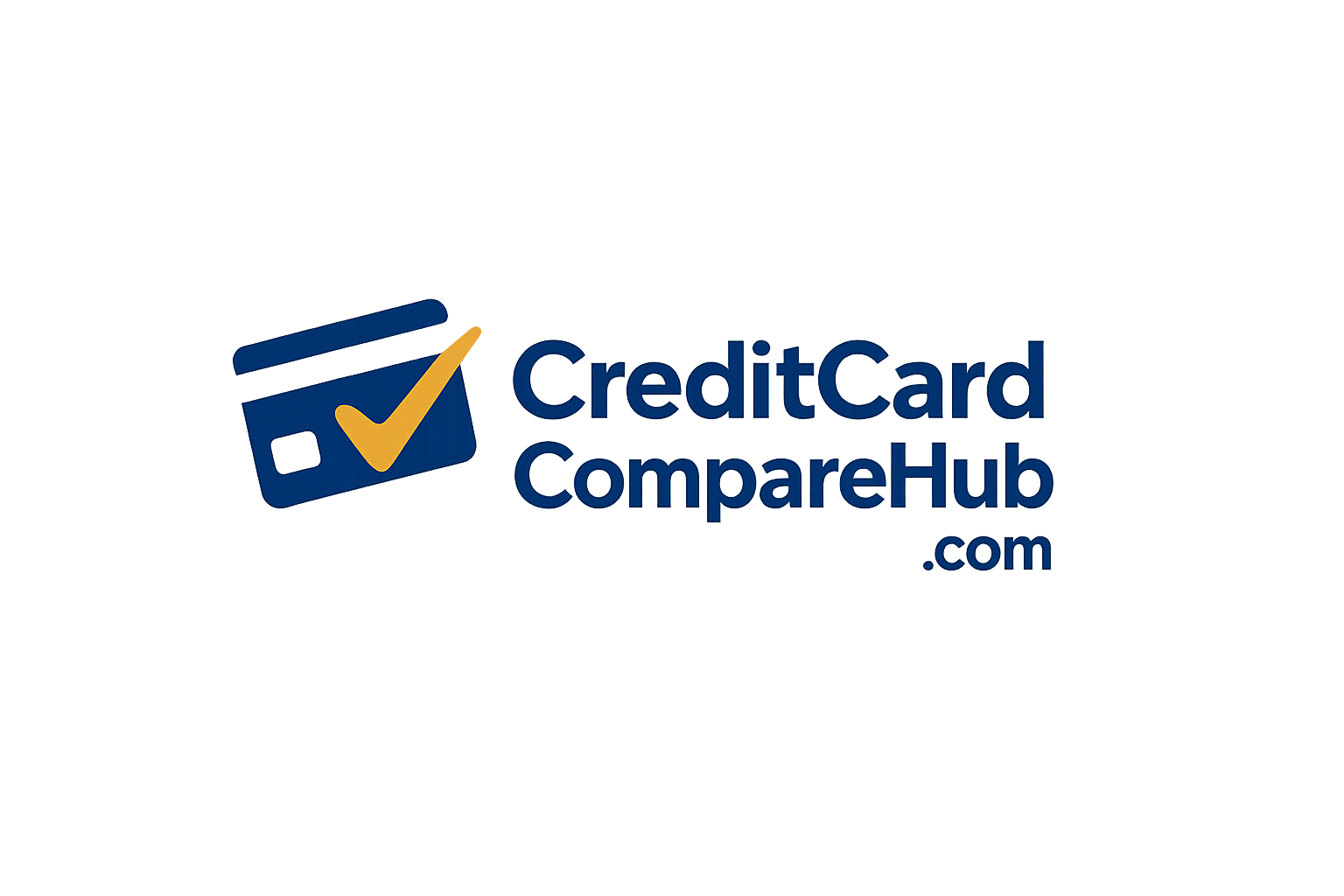10 Smart Hacks to Increase Your Credit Card Limit
Using your credit card wisely and paying off what you owe builds a solid FICO score, which can help you qualify for higher limits—keep reading to learn more smart hacks.
How can I use credit cards to improve my credit score?
Improving your credit score with credit cards is a strategic move. It involves using the card wisely and paying close attention to credit behaviors. Here’s how you can achieve it.
- Make payments on time every month. Timely payments show lenders you’re reliable, boosting your score.
- Maintain a low balance on your cards. This approach demonstrates you don’t rely heavily on credit, improving your credit utilization ratio.
- Increase your credit limit but don’t spend more. A higher limit with unchanged spending lowers your utilization percentage.
- Diversify your types of credit by using different cards for various purposes, enhancing your credit mix.
- Regularly check your credit report for errors and dispute any inaccuracies found, ensuring only valid data affects your score.
- Use less than 30% of your available credit at any given time to keep your utilization low, signaling responsible usage to creditors.
- Stay informed about financial management strategies to guide responsible card use, avoiding common pitfalls like overspending or late payments.
- Become an authorized user on another person’s account to benefit from their good credit habits, provided they use their card responsibly.
Following these steps diligently should help elevate your credit score over time, reflecting positively on your financial health and borrowing capacity.
How can I repay outstanding balances on time?

Paying off existing debts on time improves your credit score. It presents you as a reliable borrower in front of the lenders. Here’s the method to ensure you make payments punctually every month:
- Establish automatic payments via your bank. This method ensures that either the bare minimum or a predetermined amount is subtracted from your account each billing cycle consistently.
- Utilize apps for managing finances to monitor expenditure and deadlines. These technological aids offer alerts and budgeting functions that assist in avoiding excessive spending and keep you updated about forthcoming payments.
- Designate a section of your earnings particularly for repaying debts. Rate this fund equally important as other necessary costs, like housing or utility bills.
- Discuss with creditors to adjust payment dates in line with your income patterns. Most issuers are open to modifying payment schedules to suit the time when you get your earnings.
- Whenever you can, pay beyond the minimum due. This tactic decreases your balance more quickly and can reduce the total interest charges, simplifying the management of future payments.
- Check your statements monthly to spot any inaccuracies and comprehend spending habits. Consistently inspecting your statement informs you of the debt due and aids in recognizing where you can minimize spending.
- Use extra or surprise income intelligently by utilizing them to clear outstanding credit card debts. Applying supplementary funds for debts can greatly speed up the time taken to pay off.
The application of these tactics requires determination, but results in reinforcing your lending capability over time. Shifting focus to sustaining a low credit utilization ratio uncovers a further aspect of effectively managing personal finances.https://www.youtube.com/watch?v=bzBH86lSU3w
Why is maintaining a low credit utilization ratio important?
Keeping your credit utilization low tells banks you handle money well. Lenders often use this metric to judge your creditworthiness, and top issuers like Chase or American Express recommend keeping usage under 30 percent of your total limit.
For example, if you have a $100,000 combined credit card limit, experts say to keep balances below $30,000 for the best results.
Smart balance management also helps increase your chances for a future credit limit increase request. In my experience as an avid traveler using high-limit cards from Citi and Capital One since 2020, I found that staying between five and fifteen percent of available credit led to faster approvals and better rewards deals.
Low utilization signals responsible financial behavior and can help boost your FICO score over time.
How do I show proof of increased income to my credit card issuer?
Maintaining a low credit utilization ratio signals strong balance management and increases your creditworthiness. Showing proof of increased income to your credit card issuer can help you qualify for a higher limit with less hassle.
Submit recent pay stubs, tax returns, or bank statements reflecting higher deposits to demonstrate your improved financial situation. Some issuers also accept official letters from employers as valid documentation.
Upload these documents through the secure online portal provided by major banks like Chase, American Express, or Citi. Clear evidence of increased earnings often leads issuers to approve higher borrowing limits quickly.
Higher verified income reassures them that you can manage larger balances responsibly and take full advantage of top-tier credit card benefits.
What are ways to reduce existing financial obligations?
Decreasing current financial liabilities is a key move in bettering your financial condition. It offers the dual advantage of liberating assets for diverse purposes and improving your credit standing for lenders. Here are several methods to alleviate your debt load:
- Merge your debts: Shifting multiple balances to a single low-interest loan can diminish the sum you pay in interest and streamline your repayments.
- Bargain for lower interest rates: Communicate with your lenders to ask for reduced rates on your loans and credit cards, which can markedly lessen your monthly installments.
- Concentrate on high-interest debts initially: Settling the loans with the steepest interest rates in a shorter time frame can result in savings on interest payments long term.
- Formulate a budget and adhere to it: Keenly observing your spending lets you detect areas where expenditures can be reduced, creating extra funds for debt settlement.
- Augment income channels: Explore avenues to raise your income, through better-paid jobs, secondary jobs, or investments, to allocate more for debt elimination.
- Utilize unexpected gains judiciously: Use surprise financial increases, like bonuses or tax refunds, straight for debt reduction instead of spending on non-essentials.
- Truncate unnecessary expenses: Review and decrease monthly subscriptions and discretionary spending in non-critical areas.
- Dispose of unused or unneeded items: Make additional money by selling possessions that you have no further use for.
While each of these steps demand disciplined execution and thoughtful planning, they reward in bolstered financial stability and borrowing potential over time.
Subsequently, we’ll discuss how strategically asking for a credit limit hike can additionally boost your financial adaptability and credit rating.
How to request a credit limit increase strategically
Pick a time when your credit score is high and your payment history is strong, then contact your card issuer with recent proof of income to make the case for higher borrowing power—read on to find out which documents matter most.
When is the best time to ask for a credit limit increase?
Issuers prefer to approve credit limit increases after you show a solid payment history for at least six months. Creditors look for accounts with on-time payments, low credit utilization, and no recent late charges.
Requesting an increase soon after receiving a raise or bonus boosts your odds of approval since “higher income means higher borrowing capacity.” People who pay their balances in full each month also show strong financial management skills.
A good time to request is right after your issuer reviews the account annually or if your spending patterns stay steady but responsible. Avoid making this request right after applying for new loans or cards because multiple hard inquiries can impact your credit score.
Making smart requests at key moments improves your chance of boosting card limits without hurting creditworthiness. Next, let’s discuss what details matter most when submitting a limit increase application.
What information should I provide during my credit limit increase request?
Requesting a credit limit increase involves offering specific details to your card issuer. This process is essential for your financial flexibility and credit score improvement. Here is the necessary information you should provide:
- Current Income: Update your card issuer about your most recent annual salary. A rising income indicates your potential to handle a larger credit limit.
- Employment Information: Include your job position, the name of your employer, and your tenure. Career consistency indicates dependability in managing debt.
- Monthly Housing Payment: The rent or mortgage amount helps issuers evaluate your remaining income after set expenses.
- Amount of Desired Credit Limit Increase: Dictate the additional credit you desire. Stay reasonable; overly high requests without justification might lead to refusal.
- Reason for Credit Limit Increase Request: Do you aim for superior financial planning or need increased borrowing capacity? Clarifying why you need more credit assists the issuer in understanding your economic objectives.
- Banking Information: Details about savings and checking accounts illustrate financial well-being beyond mere credit usage.
- Any Additional Income Sources: State other stable income sources apart from your main job like investments or side businesses.
- Debt-to-Income Ratio: Computing and presenting this highlights your comprehension of the balance between earnings and debt, emphasizing responsible credit management.
Careful preparation of these information pieces positions you effectively for a successful request.
Transitioning to the optimal timing for making a request, increases the probability of approval…
When should I apply for a new credit card to increase my overall limit?
Banks will often approve a new credit card application if your recent credit activity shows on-time payments and low balances. If your credit score climbs above 700, or you’ve paid down existing cards to below 30% utilization, you stand in a strong position for approval.
Timing the application after paying off large purchases can boost your odds as well.
I once opened a premium card right after getting an income bump and clearing two high balances. My available borrowing capacity rose by over $50,000 within one month, without hurting my credit score.
Spacing out applications—waiting at least three months since your last major account opening—keeps lenders happy and supports long-term financial management strategies.
How can becoming an authorized user help increase my credit limit?
After applying for a new credit card, you can explore another proven strategy to increase your borrowing capacity—becoming an authorized user on someone else’s credit account. When you’re added to the right person’s established card, their higher limit and strong payment history show up on your credit report.
This boost helps improve your credit score improvement and can make lenders view you as lower risk.
Lenders often see this positive track record as proof of solid financial management, especially if the primary account holder uses less than 30% of their total limit and always pays on time.
Issuers may then offer you a higher personal limit or more favorable terms based on that enhanced history. According to Experian, many people notice better scores within 30–60 days after being added to a well-managed account.
Adding yourself as an authorized user with good payment records can be one of the fastest ways to strengthen your own profile, says Rod Griffin, Senior Director at Experian.
Why should I keep old credit accounts open?
Old credit accounts help boost your credit score by helping you maintain a longer average credit history. The age of your oldest account plays an important part in the calculation lenders use to determine your creditworthiness.
Credit bureaus like Experian, TransUnion, and Equifax include account age in their scoring models. For example, FICO considers both the age of your oldest account and the average age of all accounts when figuring out scores.
Lenders often want to see that you can handle different types of loans over time without problems. Old accounts also improve balance management by keeping your total borrowing capacity higher, which lowers your credit utilization ratio if you do not carry high balances on new cards.
On my personal journey with card management, I noticed that closing my first-ever premium card dropped my score by nearly 20 points within one month due to changes in total available limits and length of history.
If you have paid off debts on these older cards but keep them open with zero annual fees or low holding costs, they quietly add value behind the scenes while costing little or nothing extra each year.
Strategic reduction of existing obligations is next for increasing financial flexibility and positioning yourself well for future limit increase requests.
How do I dispute errors on my credit report effectively?
Keeping old credit accounts open can positively influence your credit history, a crucial factor that lenders consider. Moving forward, disputing errors on your credit report is another effective strategy to enhance your borrowing capacity and financial management. Here is how you can address mistakes effectively:
- Review your credit report carefully for any inaccuracies. Obtain reports from major bureaus like Experian, Equifax, and TransUnion. They allow one free report per year.
- Identify specific errors you want to challenge. These could range from incorrect personal details to outdated account statuses.
- Gather concrete evidence that supports your dispute. This documentation might include bank statements or payment records.
- Write a concise dispute letter to the credit bureau. Your letter should clearly outline the mistakes and request their removal or correction.
- Send your dispute letter via certified mail; ask for a return receipt as proof of delivery.
- Wait for the bureau to investigate; this process typically takes up to 30 days.
- Receive the bureau’s response along with an updated copy of your credit report if changes were made.
Handling this process requires patience and attention to detail but correcting errors can significantly improve your financial standing and creditworthiness.
How can I use my credit card responsibly to increase my limit?
Using a credit card wisely is essential for boosting your borrowing capacity. Responsible use signals to issuers that you’re a low-risk borrower, increasing the chance of a limit raise. Here’s how to do it:
- Always pay your bill on time; this shows issuers you manage debts well.
- Keep your balances low compared to your credit limits to demonstrate control over spending.
- Use the card frequently for purchases to show activity but avoid maxing it out.
- Pay more than the minimum due whenever possible to reduce balances faster and lower interest costs.
- Monitor your credit score regularly using financial management tools; this helps in understanding how your actions impact your score.
- Communicate openly with your issuer about any income increases, as higher income may qualify you for a higher limit.
- Limit new credit applications to avoid unnecessary hard inquiries that can lower your score.
- Review monthly statements carefully for any errors or fraudulent activities and report them immediately.
- Understand the terms of your credit account, such as fees, interest rates, and billing cycles, which can influence spending and payment strategies.
- Utilize mobile banking apps or online platforms for easier account management and real-time monitoring of transactions and balances.
By adopting these habits, you demonstrate to credit card issuers your responsibility in managing credit, which can lead them to increase your credit limit as a recognition of your reliability as a customer.
How often should I monitor my credit score?
Tracking your credit score every month keeps you ahead of potential problems. Many credit card issuers and personal finance tools, like Credit Karma or Experian, offer free monthly updates on your credit score.
Consistently checking helps spot identity theft fast and ensures that payment history, balance management, and low debt utilization reflect in real time.
“Your credit score can change from one month to the next based on how lenders report activity.”
Frequent monitoring also puts you in a strong position during moments that matter. Applying for a new card or requesting a higher limit feels smoother when you already know where your score stands.
Even high net worth individuals benefit from early alerts about fraud or reporting errors before making big financial moves.
Conclusion
Boosting your credit card limit takes planning, strategy, and smart habits. By paying bills promptly and using less of your available balance, you show lenders that you manage money well.
Sharing proof of higher income or adding reliable users can also improve your creditworthiness. Keep old accounts open and resolve any errors on your financial reports for the best chance at a bigger limit.
With these simple changes in personal finance routines, you’ll see real results in both borrowing power and greater financial flexibility.
For more detailed guidance on harnessing your credit card use for a better score, check out our comprehensive guide How to Use Credit Cards to Improve Your Credit Score.
FAQs
1. What are some smart hacks to increase my credit card limit?
Smart hacks to increase your credit card limit include maintaining a good payment history, keeping low balances on your cards, updating income information with the bank regularly, and requesting for an increase periodically.
2. How can having a good payment history help in increasing my credit card limit?
A good payment history shows you’re responsible with your finances. It demonstrates to lenders that you can manage debt effectively and they may be more likely to consider increasing your credit card limit.
3. Can I request for an increased credit card limit from my bank directly?
Yes, you can directly request your bank for an increased credit card limit. However, it’s important to do this sparingly as frequent requests might raise red flags about your financial stability.
4. Is there any downside of increasing my credit card limit?
While higher limits offer greater spending flexibility, they also pose potential risks if not managed carefully; such as falling into deeper debt or damaging your credit score by overspending.

 Previous Post
Previous Post Next Post
Next Post